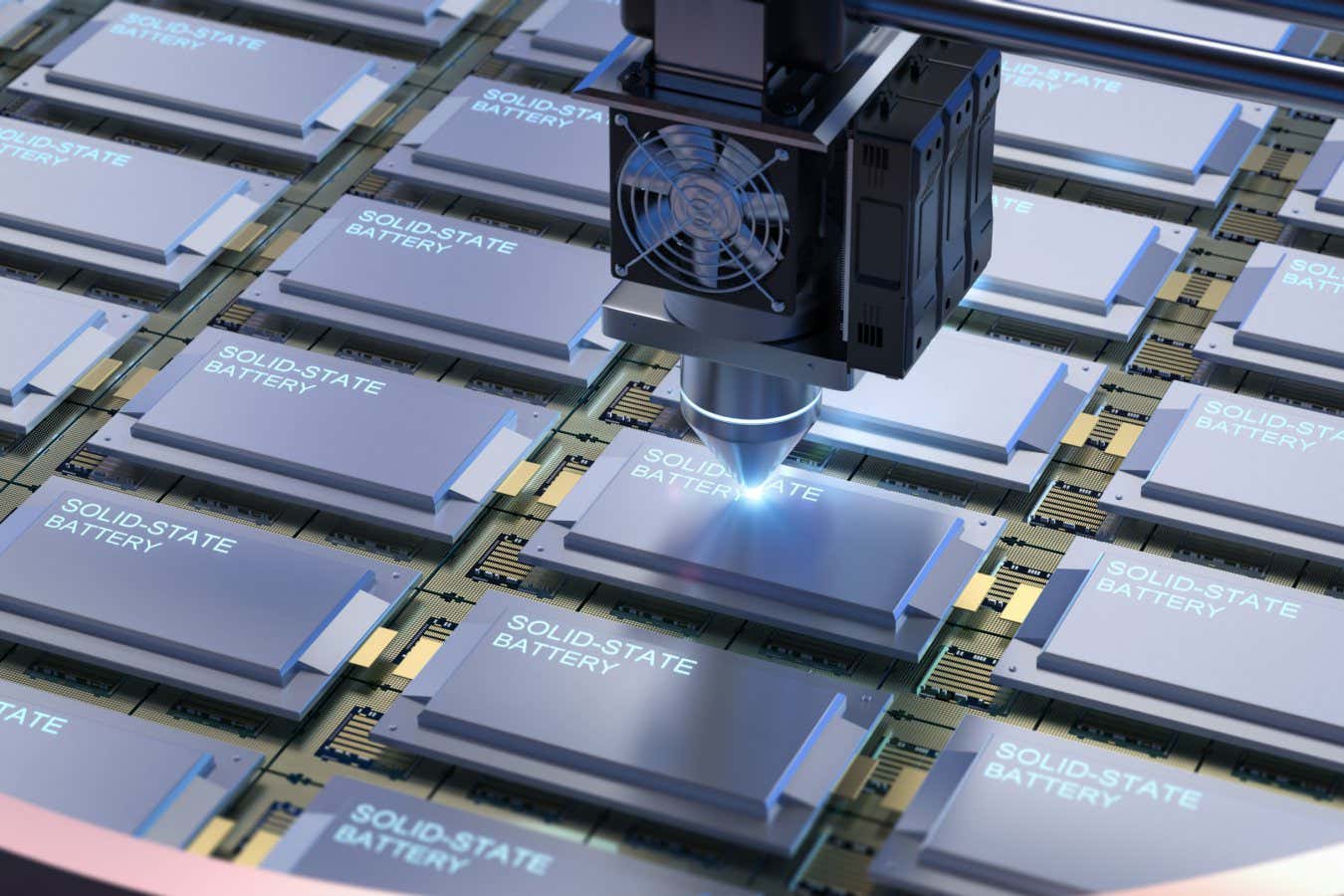Batteries containing solid electrolytes have many theoretical benefits, but a technique to manufacture them cheaply has been elusive
By Matthew Sparkes
24 October 2023
Computerised illustration of solid-state battery production. These devices could be lighter and more powerful than current batteries
Phonlamai Photo/Shutterstock
Toyota says it has made a breakthrough that will allow “game-changing” solid-state batteries to go into production by 2028. These devices will be lighter and more powerful than current batteries, giving electric cars a range of 1200 kilometres with a charging time of just 10 minutes. But should we pin our hopes on them?
What are solid-state batteries?
The lithium-ion batteries that we rely on in our phones, laptops and electric cars have a liquid electrolyte, through which ions flow in one direction to charge the battery and the other direction when it is being drained. Solid-state batteries, as the name suggests, replace this liquid with a solid material.
A lithium-ion battery will typically have a graphite electrode, a metal oxide electrode and an electrolyte of lithium salt dissolved in some sort of solvent. In solid-state batteries, you might find one of a whole host of promising materials replacing the lithium, including ceramics and sulphides.
Advertisement
Why is ditching a liquid electrolyte useful?
Although some solid-state battery prototypes still use it, one big advantage of cutting out lithium is that it is in short supply and environmentally damaging to mine. The shortage is only likely to worsen as the world shifts away from fossil fuels towards using more renewable electricity stored in batteries.
There are also technical advantages to solid-state batteries, as well as logistical and economic ones. Removing the liquid electrolyte makes batteries less susceptible to fires, for example. And while conventional lithium batteries quickly charge up to 80 per cent of their capacity, they charge slowly from there to 100 per cent. Solid-state batteries can be fully charged more quickly.
Crucially, though, solid electrolytes are less dense, so a solid-state battery can be smaller and lighter than its lithium-ion competitor. This could, in turn, make electric cars smaller and lighter, or give them a greater range for the same size and weight. The increased energy density and lower weight could even make electric aircraft a viable proposition.
